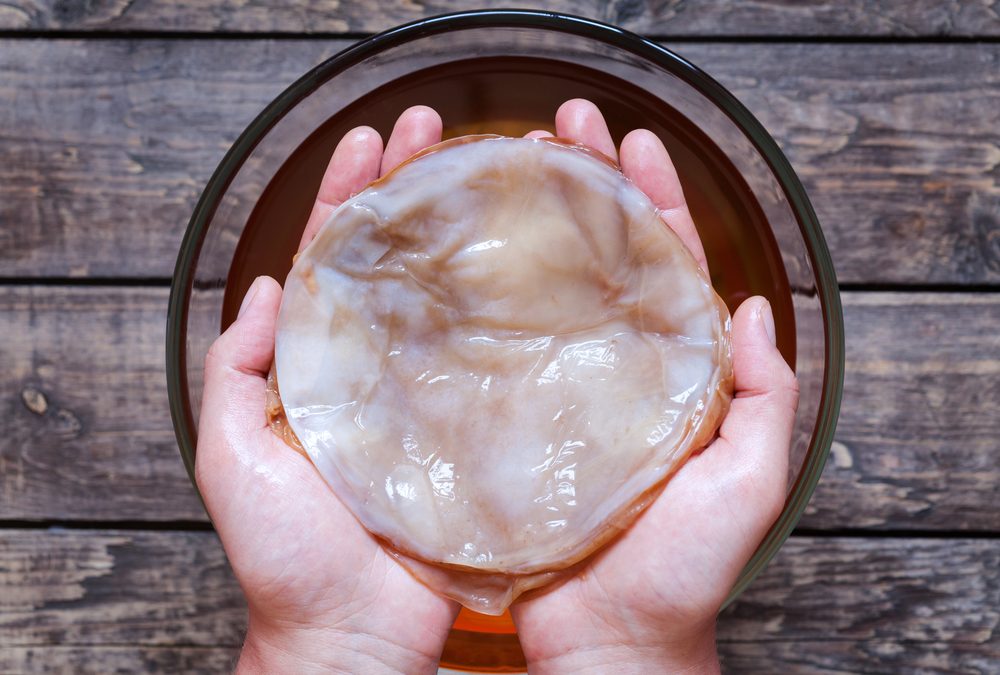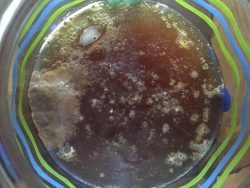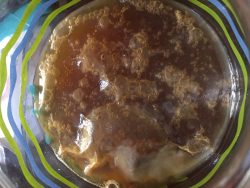If you love Kombucha, and are not loving the price tag that comes along with store bought Kombucha, you may want to try making this fermented tea at home. The challenge that initially presents itself (besides patience) is where to get a SCOBY or a symbiotic colony of bacteria and yeast. Cultures for Health offers a starter kit as well as supplies but if you’re in the mood to do things the old fashioned way (sort of), keep reading…
To grow your own SCOBY at home, you’ll need:
- a bottle of store bought Kombucha
- 4 teabags of black tea
- 7 cups of filtered water
- 1/2 cup of natural raw sugar
- a 2 quart saucepan
- 2 quart glass jar (not plastic or metal)
- a wooden spoon
- a coffee filter
- a rubber band
How to Grow a SCOBY
First, place 4 cups of filtered water in the sauce pan and bring to a boil. Remove from heat and the teabags cover and steep for 10 to 15 minutes. Remove teabags and add sugar. Stir with the wooden spoon until sugar is fully dissolved. Add remaining 3 cups of filtered water to cool the tea down more quickly and cool completely to room temperature.
Pour the tea into your glass jar and add the bottle of store bought Kombucha. Cover with the coffee filter and secure with the rubber band. Place the jar in a dark place and let it ferment at room temperature (approximately 70°) for 7 to 30 days, or until the SCOBY is about 1/4″ thick. The warmer the temperature, the less time it takes.
After your SCOBY is formed, start a new batch of Kombucha and enjoy the process!
NOTE: The liquid left from your SCOBY creation will likely be too vinegary to consume. We’ve heard some say that they use this liquid as a natural cleaning solution on countertops.
Tips for Growing Your Own SCOBY
- Be sure to keep the jar out of direct sunlight. Even wrap it in a towel to be sure it’s kept in a dark place.
- Use regular granulated sugar. Natural is fine but don’t try to use alternative sweeteners such as honey.
- If you choose not to use a coffee filter, tightly woven cloth is a must! Cloth that is too loosely woven will allow fruit flies and other pests to enter your batch.
- If you don’t already have a SCOBY, you can purchase one at Cultures for Health or make your own.
- If your tea is bubbly, tart smelling, and has a thin film on top early in the process, you’re doing good.
- You may see some brown stringy masses and that’s fine.
- If you see fuzzy black or green spots, fruit flies or other pests, your batch has been contaminated. You need to start over.
- If you’re not sure if things are moving along properly, let it go another week and you’ll find out.
- SCOBY at Day 7
- SCOBY at Day 10




